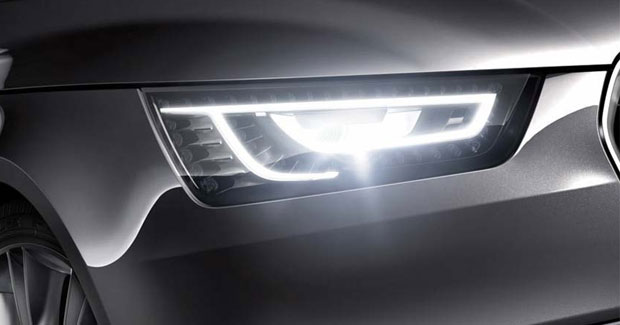- Press Center
- LEDs in Automotive Lighting
LEDs in Automotive Lighting

The safety of car-driving relates to automotive headlamps’ quality. When we are driving at night, headlamps not only illuminate the road ahead to provide drivers with a bright and broad vision, but also avoid causing head-on car drivers glare.
Automotive lighting equipment is generally divided into interior and exterior applications. In the case of exterior applications, a distinction is made between signal functions and main lighting functions. Signal functions are primarily used for vehicle marking as well as to indicate changes in direction. They are located on the front, rear and side of the vehicle. LEDs of all colors, capacities and shapes are already being used for such applications.
Light emitting diodes (LED) are becoming more and more significant in interior and exterior automotive lighting. The long service life, energy and space savings, shock and vibration resistance and new styling potential are the main advantages of using LEDs in automotive applications. Today, most central high mounted stop lamps use LEDs.
LEDs (Light Emitting Diodes) have advantages of long service life, low power consumption, small packaging, very short switching time, and anti-vibration, compared with conventional light sources of headlamps . In addition, LEDs have the mounting depth on the order of millimeter. It agrees with modern cars’ styling demands that car front is low and streamlined. A more usable space inside the car is obvious .
Advantages of LEDs in automotive lighting:
- The very principle of the LED leads to a longer service life and increased reliability.
- The working principle means that the lamp can be used for 10,000 hours and more, depending on operating temperature and definition. The service life of filament and halogen bulbs is typically a few hundred hours, whereas the gas discharge lamps also used in automotive lighting manage a service life of several thousand hours.
- The LED has significant advantages in resisting mechanical stress of the kind which occurs in vehicles.
- Its compact design is another advantage. LEDs can be used to realize lamp systems optimized in terms of design space, reducing component height and thus saving space.
- This is supported by the high efficiency of the LEDs, which significantly reduces the heat produced by the complete lighting system, particularly in the case of colored functionalities such as the tail lamp and direction indicator.
- The innovative styling options which result from the use of several light sources and new, LED specific optic concepts. They provide vehicle manufacturers with new possibilities of distinguishing between makes and models.
Source : Retrieve network information













